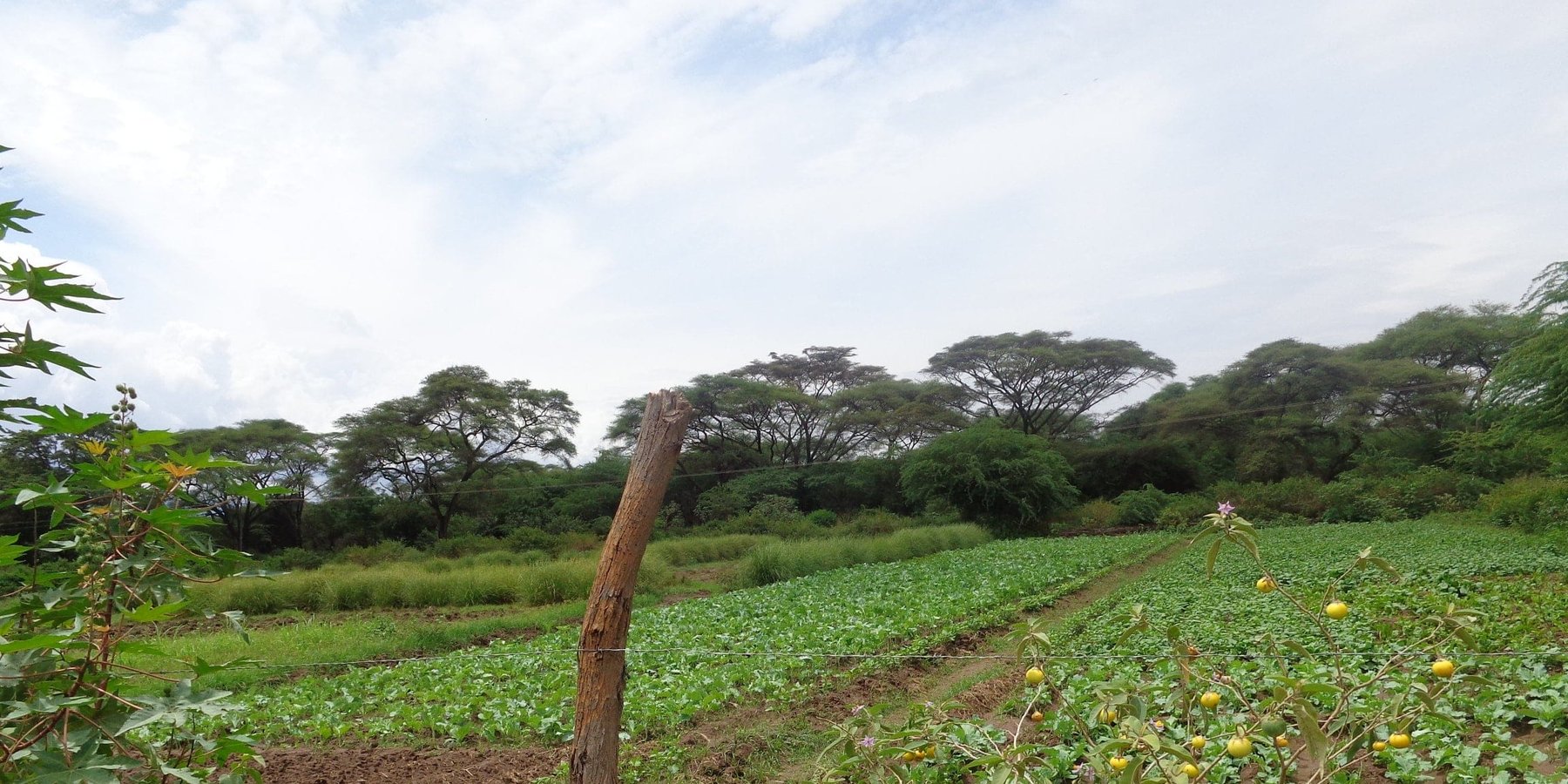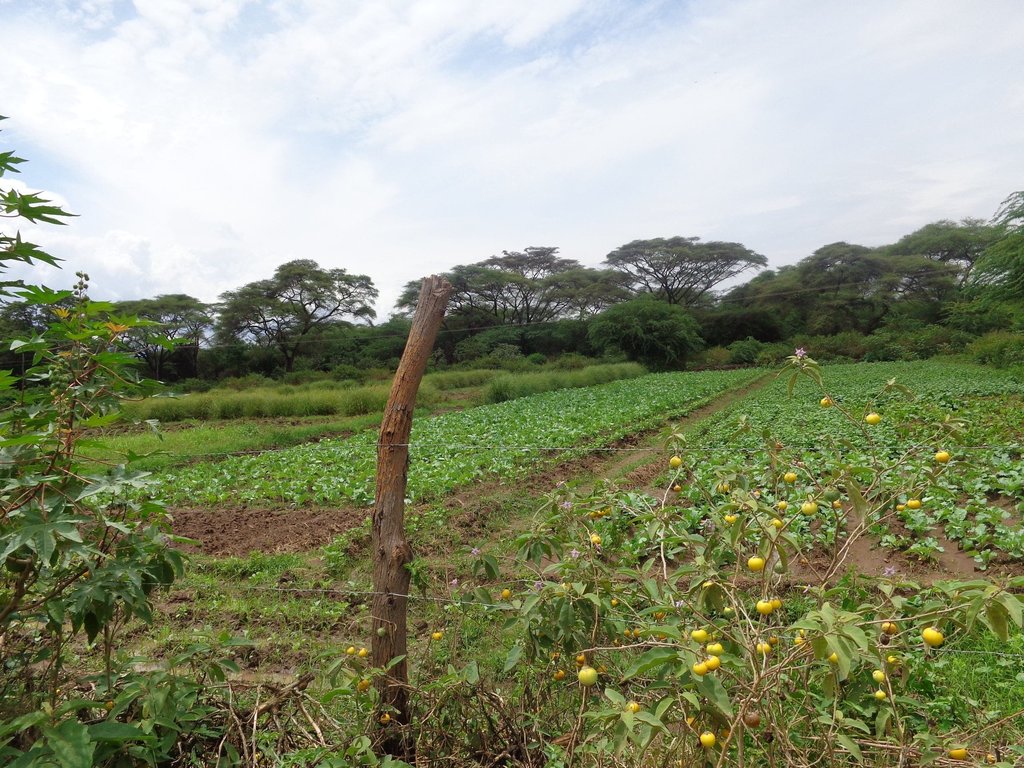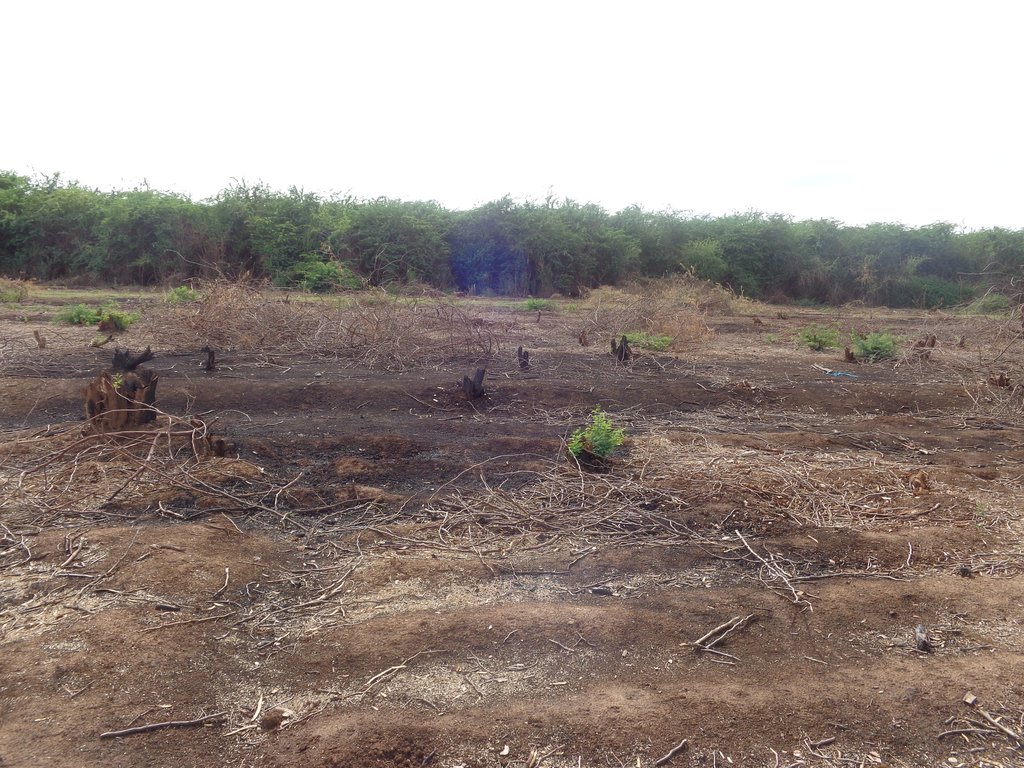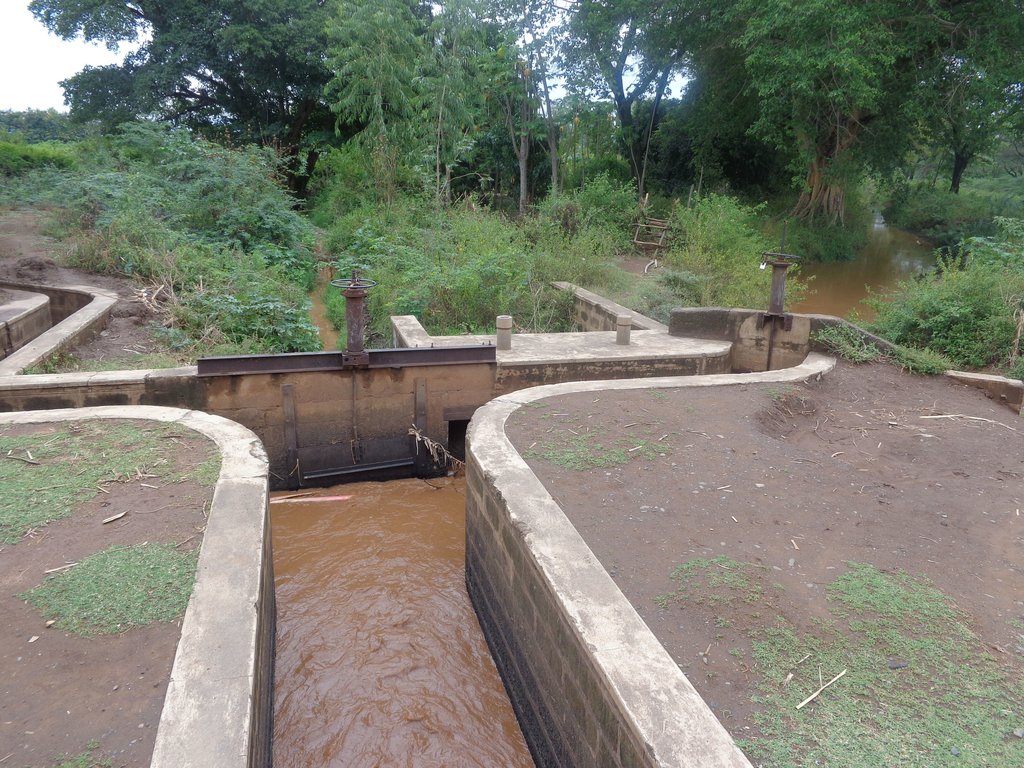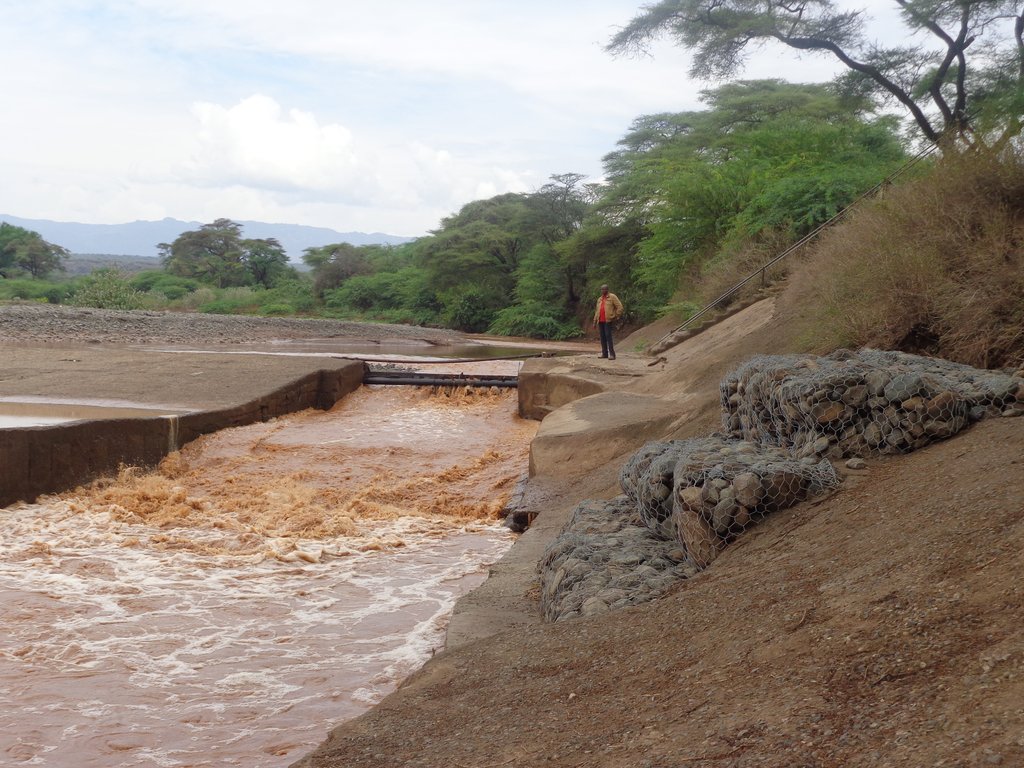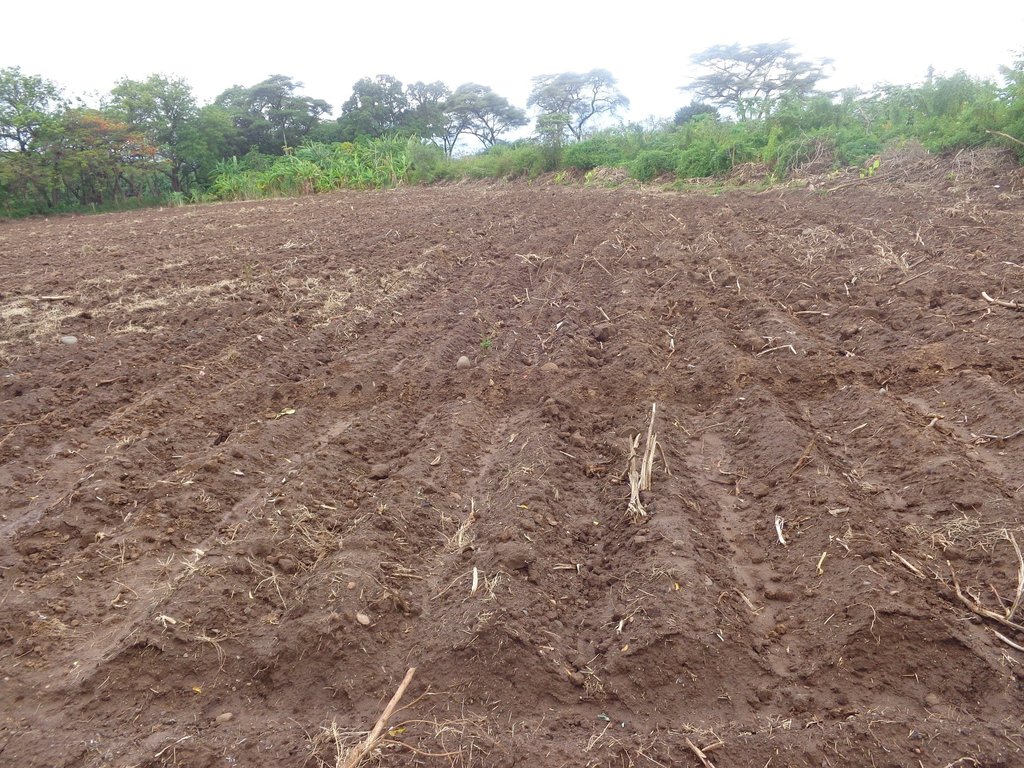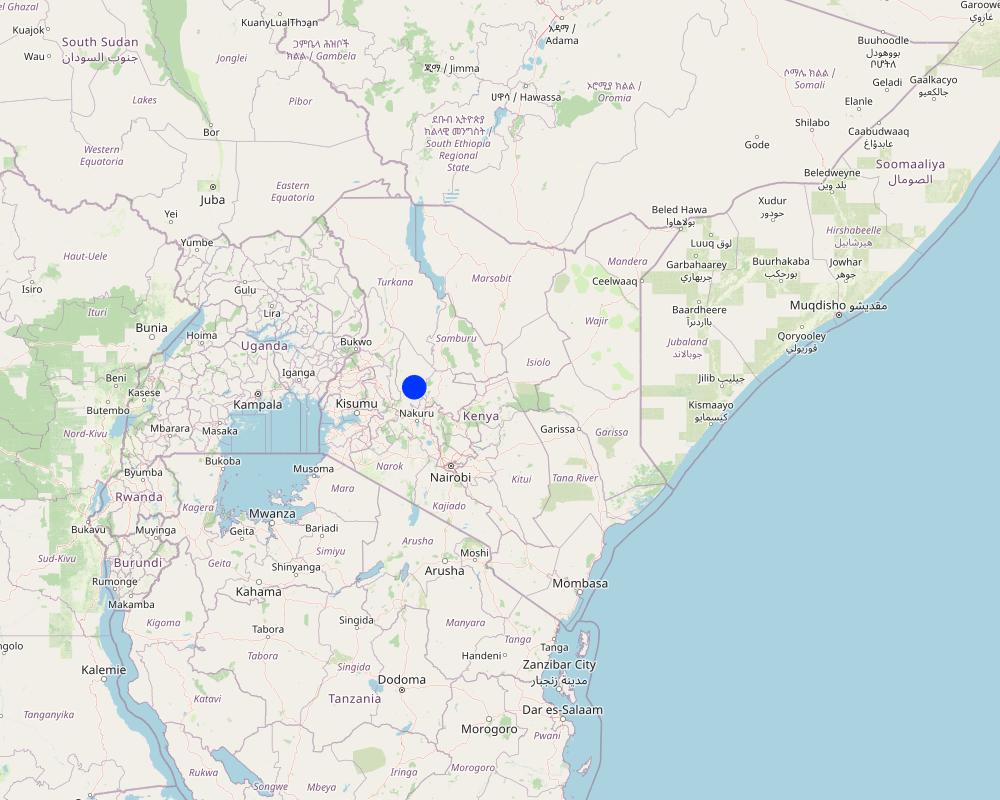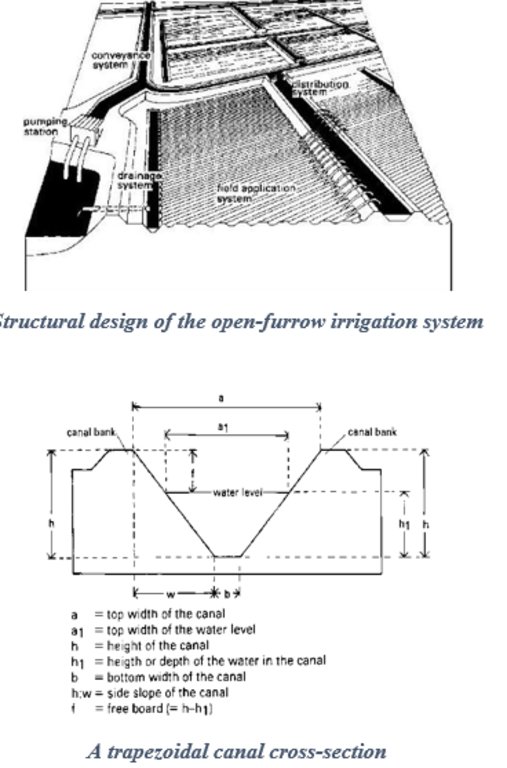Controlling invasive species by physical removal and crop cultivation through open fallow irrigation [肯尼亚]
- 创建:
- 更新:
- 编制者: Beatrice Otieno
- 编辑者: Urs Baumgartner, Christian Hergarten
- 审查者: Rima Mekdaschi Studer, Rene Eschen
Cut, Burn, Uproot and Cultivate
technologies_3444 - 肯尼亚
查看章节
全部展开 全部收起1. 一般信息
1.2 参与该技术评估和文件编制的资源人员和机构的联系方式
1.3 关于使用通过WOCAT记录的数据的条件
(现场)数据是什么时候汇编的?:
14/03/2018
编制者和关键资源人员接受有关使用通过WOCAT记录数据的条件。:
是
1.4 所述技术的可持续性声明
这里所描述的技术在土地退化方面是否存在问题,导致无法被认为是一种可持续的土地管理技术?:
否
注释:
Cultivation through irrigation in Perkerra scheme begun in 1954, three decades before the introduction of Prosopis in Baringo. Despite the rapid and widespread expansion of the invasive species, it is evident that cultivated areas under the scheme are free from Prosopis, unlike their surrounding neighborhoods which are heavily invaded and rendered unproductive. This is an indication of its sustainability to control Prosopis spread to irrigated land.
2. SLM技术的说明
2.1 技术简介
技术定义:
This is an open-furrow system consisting barriers constructed along a water source such as a river to direct water through a conveyance system by gravity into feeder channels to cultivated land. It is a simple method entailing control of water flow rate and direction to improve water utilization efficiency and enhance productivity of land.
2.2 技术的详细说明
说明:
Perkerra irrigation scheme was constructed by the colonial government in 1945 to ensure efficient water utilization, enhance soil productivity and food security. It is an open-furrow system consisting barriers constructed along a water source such as a river to direct water through a conveyance system by gravity into feeder channels to cultivated land. Water control system is constructed between the conveyance and the feeder channels to control the direction and speed of the water.
This technology is suitable on fairly flat, irrigable land with reliable water sources for irrigation. Consideration of population structure is crucial in ascertaining the availability labor force in farmlands. Depending on the size and market orientation of the production system, a stable market is also an important consideration.
Irrigated farming in the scheme is carried out in 3 seasons a year due to availability of reliable water from the permanent Perkerra River. This also ensures that land is never left idle for re-invasion of Prosopis. Activities commence with land clearance conducted at the beginning of every planting season. Prosopis on invaded farmlands are manually cut, burnt and uprooted to minimize chances of the invasive tree from coppicing. The uprooted trunk is utilized in charcoal production for commercial purposes while the small branches are used as firewood for domestic cooking.
The cleared land is then ploughed using a tractor to break the soil structure and provide a fine tilth for planting. This is followed by mechanized ridging to create channels and buffer furrows to convey and retain water long enough to be infiltrated into the soil. Seeds are then sown, a joint activity carried out through farmers’ cooperation. The scheme was originally specialized for bulb onions plantation but has transformed into more diversified food crops for subsistence and commercial purposes. Crops under contractual farming are seed maize, rice, sunflower, green grams, pepper and cow peas while surplus crops under irrigation include tomatoes, vegetables, water melons, subsistence maize crops and commercial fruit trees. In addition, availability of assured market and payment has made the scheme popular for seed maize cultivation. Ongoing experimental research on a variety sweet potatoes to reduce overdependence on maize crops have also shown promising results and are likely to be recommended for implementation. During planting seasons, fallow periods are replaced by rotational cropping and crop diversification. This improves soil structure by alternating deep and shallow-rooted crops. Replacement of the crop during rotation disrupts the life cycle of disease causing organisms, thus controlling pests and diseases as well as improving crop productivity. Consequently, there is minimal application of chemical pesticides, hence reduced chances of pollution.
The irrigated cultivation has improved the welfare of the community by diversifying their sources of livelihood from pastoralism, enhancing food security, eradication of poverty and improving infrastructure such as access roads to the farms. It is a major source of income, directly supporting 1,625 farm households earning an approximate total net income of Ksh. 148, 192,259 Million (Perkerra scheme brief prepared by the National Irrigation board, 2017). Each household is assigned between 0.5 to 4 acres of land. This range might however be narrowed in the near future due to the increasing population in demand for the fixed land resource. The other option under consideration is to reclaim more invaded land and expand the scheme. The challenge facing this approach and is yet to be addressed is limited water resources to sustain the expansion. Lack of suitable market for non-contractual crops as well as poor pricing due to monopolization by contracting institutions is also a great setback to this technology. A good example is the abandonment of pawpaw production by farmers due to marketing problems.
2.3 技术照片
2.5 已应用该技术的、本评估所涵盖的国家/地区/地点
国家:
肯尼亚
区域/州/省:
Baringo County
有关地点的进一步说明:
Marigat sub-couty
Map
×2.6 实施日期
如果不知道确切的年份,请说明大概的日期:
- 50多年前(传统)
2.7 技术介绍
详细说明该技术是如何引入的:
- 通过项目/外部干预
注释(项目类型等):
The scheme was established during the colonial period through local detainees in Marigat. This followed a feasibility study pointing to the suitability of the IIchamus plain for agricultute,
3. SLM技术的分类
3.1 该技术的主要目的
- 改良生产
- 结合其他技术保护流域/下游区域
- 创造有益的经济影响
- 创造有益的社会影响
3.2 应用该技术的当前土地利用类型
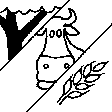
混合(作物/放牧/树木),包括农林
- 农林业
主要产品/服务:
Contracted crops: Seed maize, green grams, sunflower
Surplus crops: tomatoes, vegetables, assorted fruit and tree seedlings, pepper
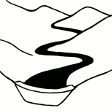
水道、水体、湿地
- 排水管道、水道
如果由于技术的实施而导致土地用途发生变化,则在技术实施前说明土地利的用途。:
IIchamus plain was initially a pastoral land for grazing. Being a state owned land with no one held responsible for its management, the land was poorly managed by the society.
3.3 有关土地利用的更多信息
该技术所应用土地的供水:
- 混合雨水灌溉
注释:
Channeling of irrigation water into farms is restricted to dry seasons and temporarily halted during the rainy season.
每年的生长季节数:
- 3
具体说明:
The irrigation scheme is subjected to continuous cultivation with contracted crops planted in 2 seasons and a surplus crop on a third season in a year. Crop rotation and diversification is practiced to improve soil productivity, control pests, reduce soil erosion and enhance soil structure.
3.4 该技术所属的SLM组
- 轮作制度(轮作、休耕、轮垦)
- 灌溉管理(包括供水、排水)
- 引水和排水
3.5 技术传播
具体说明该技术的分布:
- 均匀地分布在一个区域
如果该技术均匀地分布在一个区域上,请注明覆盖的大致区域。:
- > 10,000 平方千米
注释:
The technology are specifically applied along the irrigation scheme with sufficient water for irrigation
3.6 包含该技术的可持续土地管理措施

农艺措施
- A1:植被和土壤覆盖层
- A2:有机质/土壤肥力
- A5:种子管理,改良品种

植物措施
- V3:植被的清理
- V4:更换或清除外来/入侵物种

结构措施
- S2:堤、岸
- S5:大坝、集水斗、水池
- S7:集水/供水/灌溉设备

管理措施
- M1:改变土地使用类型
- M4:活动时间安排的重大变化
- M5:物种组成的控制/变化
3.7 该技术强调的主要土地退化类型

土壤水蚀
- Wt:表土流失/地表侵蚀
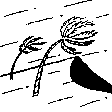
土壤风蚀
- Et:表土流失

化学性土壤退化
- Cn:肥力下降和有机质含量下降(非侵蚀所致)
- Cs:盐化/碱化

生物性退化
- Bh:栖息地丧失
- Bq:数量/生物量减少
- Bs:质量和物种组成/多样性的下降
- Bp:害虫/疾病增加,捕食者减少

水质恶化
- Ha:干旱化
3.8 防止、减少或恢复土地退化
具体数量名该技术与土地退化有关的目标:
- 修复/恢复严重退化的土地
4. 技术规范、实施活动、投入和成本
4.1 该技术的技术图纸
4.2 技术规范/技术图纸说明
The intake structure convey water from the main water source to the irrigation system. It may consist of a water pump or a barrier designed for this purpose. The water is directed to a conveyance system of open canals which control the flow and direction of water to different field application and distribution systems. The canals depth (h) is preferred to exceed the expected maximum water level (h){h>h1} of water within the irrigation system to minimize bank overflow. The side slope is a ratio of the vertical height to the horizontal canal width (h:w). They are fitted with water measurement, erosion and distribution control structures to regulate accurate distribution of water to the farms with minimum siltation of the banks. The water is then distributed to field ditches which transfer it to the irrigated farm. These are narrow waterways dug along the farms with checks across their lengths to hold and raise the upstream water levels long enough before releasing it to the next segment of the field ditch. This is meant to increase the rate of water infiltration into the soil.
4.3 有关投入和成本计算的一般信息
具体说明成本和投入是如何计算的:
- 每个技术单元
指定单位:
hactares
指定体积、长度等(如果相关):
1
其它/国家货币(具体说明):
KES
注明美元与当地货币的汇率(如相关):1美元=:
100.0
注明雇用劳工的每日平均工资成本:
500
4.4 技术建立活动
| 活动 | 措施类型 | 时间 | |
|---|---|---|---|
| 1. | Construct gravity intake system | 结构性的 | Once during establishment |
| 2. | Excavation of water canals | 结构性的 | Once during establishment |
| 3. | Establishment of water control structures | 结构性的 | Once during establishment |
| 4. | Land preparation ( Clearance and partitioning) | 结构性的 | Once during establishment |
| 5. | Construction of a suitable road network | 结构性的 | Once during establishment |
注释:
Activities involved are the construction of a gravity intake system, excavation of water canals, construction of a suitable road network and water control structures. Prior considerations are reliable water source, availability of irrigable land and labor for cultivation.
4.5 技术建立所需要的费用和投入
如果可能,按下表分列技术建立费用,并列明各项投入和每项投入的费用。如果您无法分解成本,给出建立该技术的总成本估算。:
600000000.0
注释:
The initial establishment and construction of the irrigation infrastructure is often conducted by the national government due to associated high costs approximated by key informants to be Ksh, 600, 000,000 (600,000 USD). This is however an initial, one off expenditure that are non-recurrent.
4.6 维护/经常性活动
| 活动 | 措施类型 | 时间/频率 | |
|---|---|---|---|
| 1. | Clearing land | 农业学的 | 3 times a year before every planting season. |
| 2. | Ploughing | 农业学的 | 3 times a year before every planting season. |
| 3. | Ridging/Cutting furrows | 结构性的 | 3 times a year before every planting season. |
| 4. | De-silting of canals | 管理 | 3 times a year before every planting season. |
| 5. | Planting | 农业学的 | 3 times a year. |
| 6. | first irrigation | 结构性的 | 3 times a year after planting (3 to 5 days per season) |
| 7. | Pest control | 农业学的 | Whenever applicable |
| 8. | Weeding | 农业学的 | Once every season |
| 9. | Second irrigation | 结构性的 | 10 to 12 (each time withinn 3 to 4 days) per planting season. |
| 10. | Top dressing ( Apply fertilizer) | 农业学的 | Once every season |
| 11. | Harvesting | 农业学的 | Once every season |
| 12. | Shelling | 农业学的 | Once every season |
注释:
Maintenance activities mentioned above are dependent on the status of an individual's farm, availability of resources and the purpose for cultivation. Farm produce cultivated under contracted terms will however need to follow strict procedures for them to meet the minimum requirements.
4.7 维护/经常性活动所需要的费用和投入(每年)
| 对投入进行具体说明 | 单位 | 数量 | 单位成本 | 每项投入的总成本 | 土地使用者承担的成本% | |
|---|---|---|---|---|---|---|
| 劳动力 | Land clearance | Man-hour | 540.0 | 120.0 | 64800.0 | 100.0 |
| 劳动力 | Partitioning | Man-hour | 180.0 | 100.0 | 18000.0 | 100.0 |
| 劳动力 | Planting | Man-hour | 90.0 | 100.0 | 9000.0 | 100.0 |
| 设备 | Ploughing tractor | Hours | 18.0 | 420.0 | 7560.0 | 100.0 |
| 设备 | Ridging tractor | Hours | 18.0 | 420.0 | 7560.0 | 100.0 |
| 植物材料 | Seeds and seedlings | Kg | 75.0 | 150.0 | 11250.0 | 100.0 |
| 植物材料 | Channeling water for irrigation | Season | 3.0 | 2000.0 | 6000.0 | 100.0 |
| 肥料和杀菌剂 | Fertilizer | Kg | 150.0 | 50.0 | 7500.0 | 100.0 |
| 技术维护所需总成本 | 131670.0 | |||||
4.8 影响成本的最重要因素
描述影响成本的最决定性因素:
Size of land
Disease and pest outbreak
Crop variety as contracted crops minimum requirements which may be costly to meet
Occurrence of rainy seasons especially during harvesting which affect the drying cost and output of produce. Seed maize, for example, may not meet the required moisture content when aired during the rainy season hence lowering the net income from them.
Condition of the farm e.g invasion level by Prosopis
5. 自然和人文环境
5.1 气候
年降雨量
- < 250毫米
- 251-500毫米
- 501-750毫米
- 751-1,000毫米
- 1,001-1,500毫米
- 1,501-2,000毫米
- 2,001-3,000毫米
- 3,001-4,000毫米
- > 4,000毫米
指定年平均降雨量(若已知),单位为mm:
671.00
有关降雨的规范/注释:
Rainfall is characterized by seasonal and annual fluctuations
农业气候带
- 半干旱
The area is in a semi-arid zone with temperatures ranging between 16 to 36 degrees, averagely 24.6 degrees, accompanied by high evaporation rates of up to 6mm. It experiences an average rainfall of 671 mm annually which are very erratic.
5.2 地形
平均坡度:
- 水平(0-2%)
- 缓降(3-5%)
- 平缓(6-10%)
- 滚坡(11-15%)
- 崎岖(16-30%)
- 陡峭(31-60%)
- 非常陡峭(>60%)
地形:
- 高原/平原
- 山脊
- 山坡
- 山地斜坡
- 麓坡
- 谷底
垂直分布带:
- 0-100 m a.s.l.
- 101-500 m a.s.l.
- 501-1,000 m a.s.l.
- 1,001-1,500 m a.s.l.
- 1,501-2,000 m a.s.l.
- 2,001-2,500 m a.s.l.
- 2,501-3,000 m a.s.l.
- 3,001-4,000 m a.s.l.
- > 4,000 m a.s.l.
说明该技术是否专门应用于:
- 不相关
关于地形的注释和进一步规范:
The technology is applied in relatively flat land to increase water retention long enough to be infiltrated into the soil
5.3 土壤
平均土层深度:
- 非常浅(0-20厘米)
- 浅(21-50厘米)
- 中等深度(51-80厘米)
- 深(81-120厘米)
- 非常深(> 120厘米)
土壤质地(表土):
- 细粒/重质(粘土)
土壤质地(地表以下> 20厘米):
- 细粒/重质(粘土)
表土有机质:
- 低(<1%)
如有可能,附上完整的土壤描述或具体说明可用的信息,例如土壤类型、土壤酸碱度、阳离子交换能力、氮、盐度等。:
Clay soil with alkaline pH of 7.5 , rich in calcium phosphate but low in organic matter
5.4 水资源可用性和质量
地表水的可用性:
好
水质(未处理):
仅供农业使用(灌溉)
水的盐度有问题吗?:
是
该区域正在发生洪水吗?:
是
5.5 生物多样性
物种多样性:
- 低
栖息地多样性:
- 低
关于生物多样性的注释和进一步规范:
Prosopis has heavily invaded the land, encroaching agro-pastoral land and outcompeting native species leading to degradation of native species and habitats.
5.6 应用该技术的土地使用者的特征
定栖或游牧:
- 定栖的
生产系统的市场定位:
- 混合(生计/商业
非农收入:
- 收入的10-50%
相对财富水平:
- 贫瘠
个人或集体:
- 个人/家庭
机械化水平:
- 手工作业
- 机械化/电动
性别:
- 女人
- 男人
土地使用者的年龄:
- 中年人
- 老年人
5.7 应用该技术的土地使用者拥有或租用的平均土地面积
- < 0.5 公顷
- 0.5-1 公顷
- 1-2 公顷
- 2-5公顷
- 5-15公顷
- 15-50公顷
- 50-100公顷
- 100-500公顷
- 500-1,000公顷
- 1,000-10,000公顷
- > 10,000公顷
这被认为是小规模、中规模还是大规模的(参照当地实际情况)?:
- 大规模的
注释:
Current land allocated by the government for the practice is an estimate of 1,800 ha. Pressure due to population increase has however triggered plans for future expansion.
5.8 土地所有权、土地使用权和水使用权
土地所有权:
- 州
土地使用权:
- 社区(有组织)
用水权:
- 社区(有组织)
注释:
The scheme is state owned , leased to the community who nominate a 7 member advisory committee tasked with all land administration aspects ranging from land adjudication, allocation, succession and dispute management as well as set laws guiding water utilization and conservation.
5.9 进入服务和基础设施的通道
健康:
- 贫瘠
- 适度的
- 好
教育:
- 贫瘠
- 适度的
- 好
技术援助:
- 贫瘠
- 适度的
- 好
就业(例如非农):
- 贫瘠
- 适度的
- 好
市场:
- 贫瘠
- 适度的
- 好
能源:
- 贫瘠
- 适度的
- 好
道路和交通:
- 贫瘠
- 适度的
- 好
饮用水和卫生设施:
- 贫瘠
- 适度的
- 好
金融服务:
- 贫瘠
- 适度的
- 好
6. 影响和结论性说明
6.1 该技术的现场影响
社会经济效应
生产
作物生产
生产区域
SLM之前的数量:
567 ha
SLM之后的数量:
1,745 ha
注释/具体说明:
the area developed for furrow irrigation has increased by 1,178 ha between 1958 when the operations begun to date. This is more than twice the initial land size allocated and utilized for irrigation purposes.
土地管理
注释/具体说明:
Development of the technology has transformed it from an open access to an organized communal tenure system with communally-designed restrictions to its access, utilization and management.
水资源可用性和质量
家畜用水的质量
注释/具体说明:
There are chances of water pollution when contaminated irrigation water flows back to the animal watering points.
灌溉用水需求
注释/具体说明:
The progressive increase of area under cultivation as well as prolonged dry seasons over the years have culminated into increased water consumption hence a high demand for the same.
收入和成本
农业收入
SLM之后的数量:
Net income of 148 192 259 million Kenya shillings
收入来源的多样性
注释/具体说明:
Farming activities have diversified and increased income sources to the community who depended mainly on pastoralism. This has been enhanced by a wide variety of crops being cultivated through irrigation.
工作量
注释/具体说明:
Farming activities (tedious cutting, burning and uprooting of Prosopis in invaded farms, ploughing, weeding and harvesting) are all physical activities that increase the workload of the communities involved.
生态影响
生物多样性:植被、动物
植被覆盖
生物量/地上C
植物多样性
外来入侵物种
注释/具体说明:
Irrigated land has to undergo clearance of all Invasive species, in this case, Prosopis during land preparation activities. This is carried out through a cut-burn-uproot approach to minimize chances of their proliferation. Any re-growing invasive plant is uprooted before maturity to prevent further competition for water and nutrient with cultivated crops. Chances of re-invasion are also minimized as land is never left idle for colonization by Prosopis. This has greatly decreased invasive cover on irrigated land.
减少气候和灾害风险
干旱影响
注释/具体说明:
Drought related impacts such as malnutrition, famine and death have been reduced by irrigation practices which increases food insecurity independent of the season.
6.2 该技术的场外影响已经显现
水资源可用性
注释/具体说明:
Diversion of water into open channels for irrigation reduce the downstream flow for offsite usage downstream.
下游洪水
注释/具体说明:
Potential flood water are diverted to farms hence reducing downstream flooding. However, this impact may not be significant during heavy downpours where diversion valves are closed to prevent unnecessary water logging on farmlands.
6.3 技术对渐变气候以及与气候相关的极端情况/灾害的暴露和敏感性(土地使用者认为的极端情况/灾害)
渐变气候
渐变气候
| 季节 | 气候变化/极端天气的类型 | 该技术是如何应对的? | |
|---|---|---|---|
| 季雨量 | 湿季/雨季 | 增加 | 适度 |
气候有关的极端情况(灾害)
生物灾害
| 该技术是如何应对的? | |
|---|---|
| 流行病 | 非常不好 |
| 昆虫/蠕虫侵扰 | 非常不好 |
6.4 成本效益分析
技术收益与技术建立成本相比如何(从土地使用者的角度看)?
短期回报:
稍微积极
长期回报:
积极
技术收益与技术维护成本/经常性成本相比如何(从土地使用者的角度看)?
短期回报:
稍微积极
长期回报:
积极
6.5 技术采用
- 1-10%
如若可行,进行量化(住户数量和/或覆盖面积):
Direct beneficiaries of the technologies are about 13,000 people. However, indirect beneficiaries from the transportation and sale of the produce may double this number
在所有采用这项技术的人当中,有多少人是自发地采用该技术,即未获得任何物质奖励/付款?:
- 90-100%
注释:
All operation are carried out at the full expense of the land users. Credits advanced to them have to be repaid with at least 11% interest
6.6 适应
最近是否对该技术进行了修改以适应不断变化的条件?:
是
若是,说明它适应了哪些变化的条件:
- 气候变化/极端气候
具体说明技术的适应性(设计、材料/品种等):
Water conveyance along the furrows to the farms is halted during heavy downpour to minimize water logging.
6.7 该技术的优点/长处/机会
| 土地使用者眼中的长处/优势/机会 |
|---|
| A source of finance to land users through sale of their produce. |
| 编制者或其他关键资源人员认为的长处/优势/机会 |
|---|
| Continuous farming activities have ensured that land is constantly managed, limiting the proliferation of Prosopis weeds which have adverse impacts to the ecosystem and livelihoods. |
| Improved human welfare by enhancing their financial stability. An extension of this is indirect benefit through employment creation to farm laborers, merchants and buyers of the fresh and healthy farm produce. |
| Increased food security |
6.8 技术的弱点/缺点/风险及其克服方法
| 土地使用者认为的弱点/缺点/风险 | 如何克服它们? |
|---|---|
| Poor market prices for their produce. | They feel they have no option due to inadequate knowledge and access to other available markets |
| Pests and disease out break such as the fall armyworm. | Advisory services are offered by research institutions to stakeholders on how to manage and control pests. |
| 编制者或其他关键资源人员认为的弱点/缺点/风险 | 如何克服它们? |
|---|---|
| Monopoly of the market by the contracting institutions may lead to poor pricing or tight minimum requirements such as the quality of output leading to losses. | Diversification of market to tighten competition that may offer better prices to farmers. |
| High chances of water pollution by chemicals and fertilizers that may be washed away by the running water | Minimize application of chemicals as possible accompanied by integrated nutrient management practices. |
| Post harvest losses when supply exceeds demand | Proper timing of planting season whereby harvesting coincides with seasons of shortage and scarcity to maximize returns. |
7. 参考和链接
7.1 信息的方法/来源
- 实地考察、实地调查
2
- 与土地使用者的访谈
2
- 与SLM专业人员/专家的访谈
3
- 根据报告和其他现有文档进行编译
2
7.2 参考可用出版物
标题、作者、年份、ISBN:
Brouwer, C., Goffeau, A., and Heibloem, M. (1985): Irrigation Water Management: Training Manual No. 1
可以从哪里获得?成本如何?
http://www.fao.org/docrep/r4082e/r4082e00.htm#Contents
7.3 链接到网络上可用的相关信息
标题/说明:
Perkerra Irrigation scheme Brief
URL:
https://www.nib.or.ke/projects/public-irrigation-schemes/perkerra-irrigation-scheme
标题/说明:
The 9 Benefits of Crop Rotation to the Environment
URL:
http://richmondvale.org/crop-rotation/
链接和模块
全部展开 全部收起链接
无链接
模块
无模块


